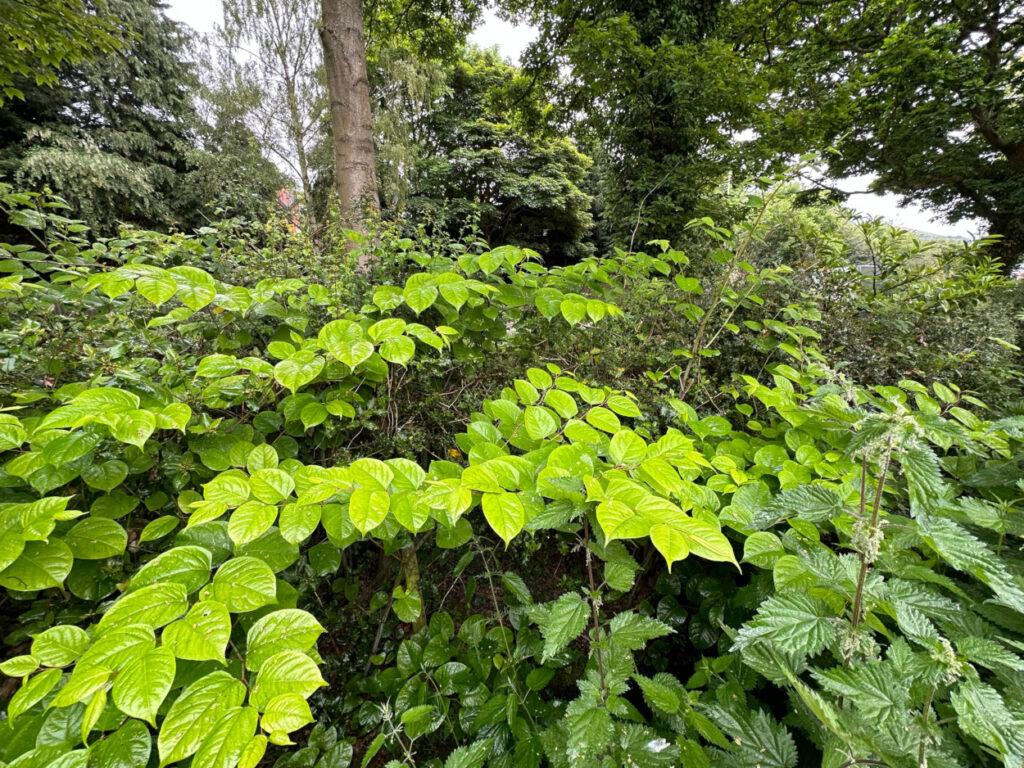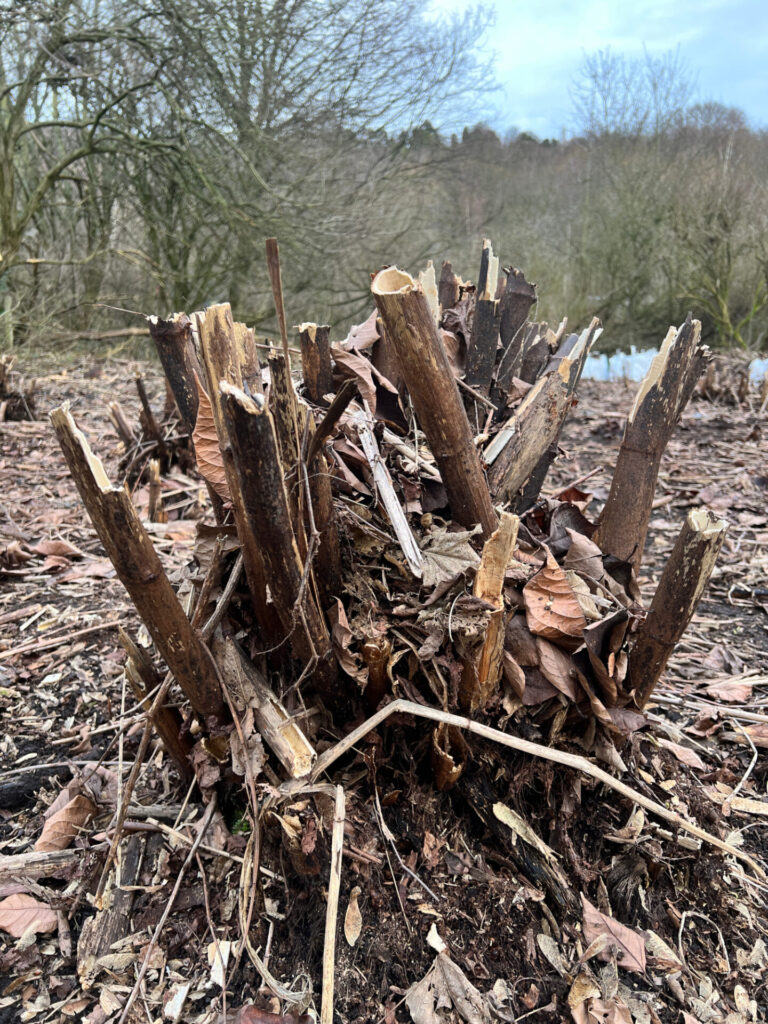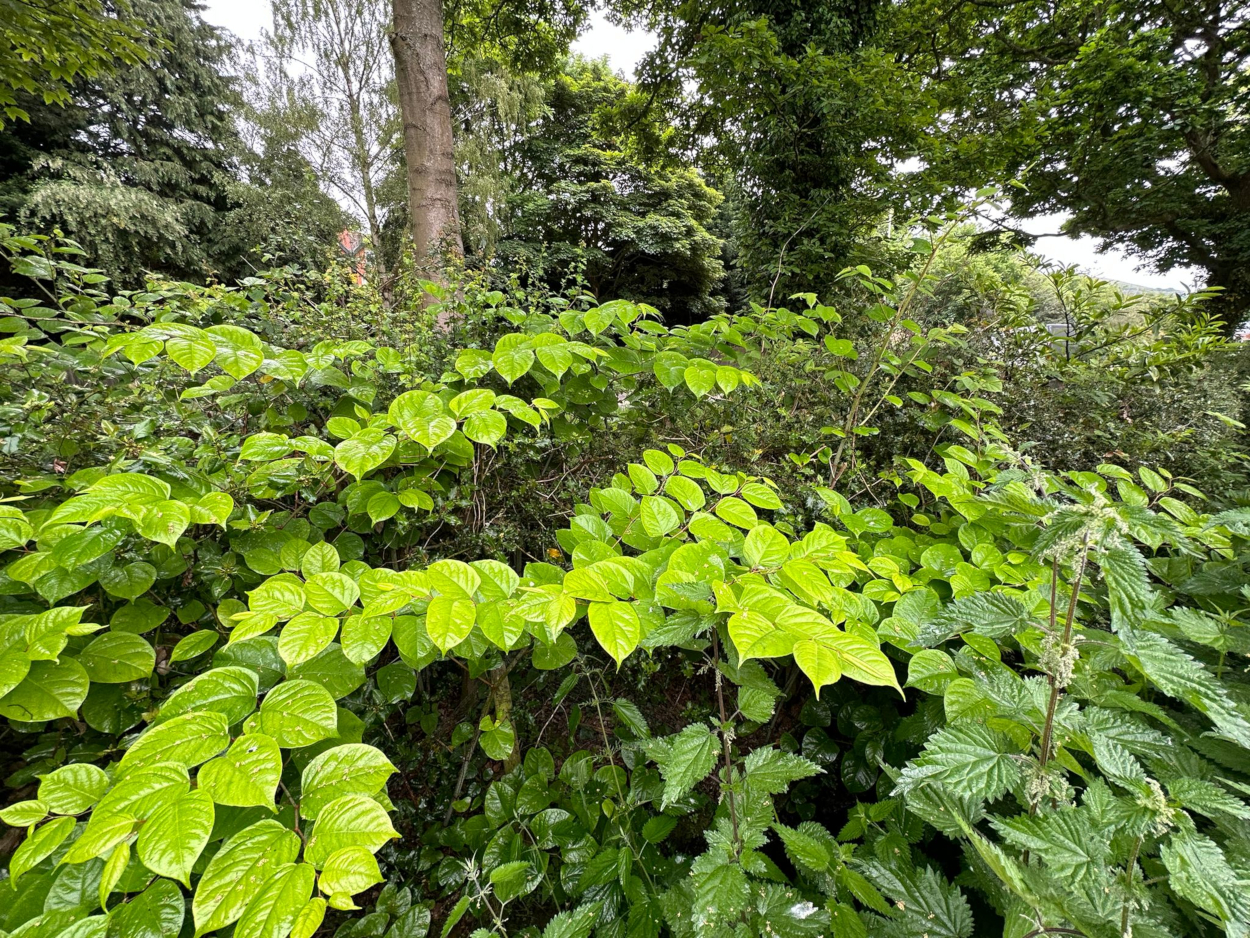Just why is Japanese Knotweed such an issue? What exactly is it – and how does it grow – and how does it spread?
Japanese Knotweed is an invasive plant species that spreads primarily through its underground structures, including rhizomes and rhizome crowns.
The formation of Japanese Knotweed crowns is an essential part of its growth and reproductive strategy.
Here’s how Japanese Knotweed develops:
Rhizome Growth: Japanese Knotweed primarily spreads through its extensive underground rhizome system. Rhizomes are underground stems that can produce new shoots and roots. As the rhizomes grow and spread, they can give rise to new plants
Rhizome Crowns: The rhizomes of Japanese Knotweed can give rise to dense clusters or nodes called rhizome crowns. These crowns are like hubs where multiple rhizomes converge and sprout new growth. These clusters of rhizomes are typically found near the surface of the soil and are responsible for sending up shoots in the spring.
Shoot Emergence: In the spring, as temperatures rise, the rhizome crowns of Japanese Knotweed become active. New shoots emerge from these crowns, quickly growing into tall, bamboo-like stems with distinctive shield-shaped leaves. These shoots can grow rapidly, sometimes reaching heights of several feet in a matter of weeks.

Leafy Growth: Once the shoots emerge and grow, they produce leaves that enable the plant to photosynthesize and generate energy for further growth and reproduction. Japanese Knotweed is known for its rapid and dense leafy growth.
Flowering and Seed Production: While Japanese Knotweed is capable of producing seeds, it rarely does so in many parts of the world, including Europe and North America. Most propagation occurs through vegetative means, primarily via rhizomes and rhizome crowns.
Seasonal Growth and Expansion: Japanese Knotweed’s growth cycle includes seasonal expansion of the rhizome network and the formation of new rhizome crowns. This allows the plant to spread and colonise new areas, often at the expense of native vegetation.
Persistence and Invasiveness: The ability of Japanese Knotweed to form these rhizome crowns, rapidly grow, and spread vegetatively makes it a highly invasive and persistent plant. It can quickly outcompete native vegetation, disrupt ecosystems, and even damage infrastructure by growing through established cracks in roads and buildings.
Efforts to control Japanese Knotweed often involve targeting these rhizome crowns and the underground rhizome network since removing or effectively treating the rhizomes is crucial for managing and eradicating this invasive plant species.
If you’ve an issue with Japanese knotweed and need advice on how best to remediate an issue or need a survey conducting, get in touch here.













